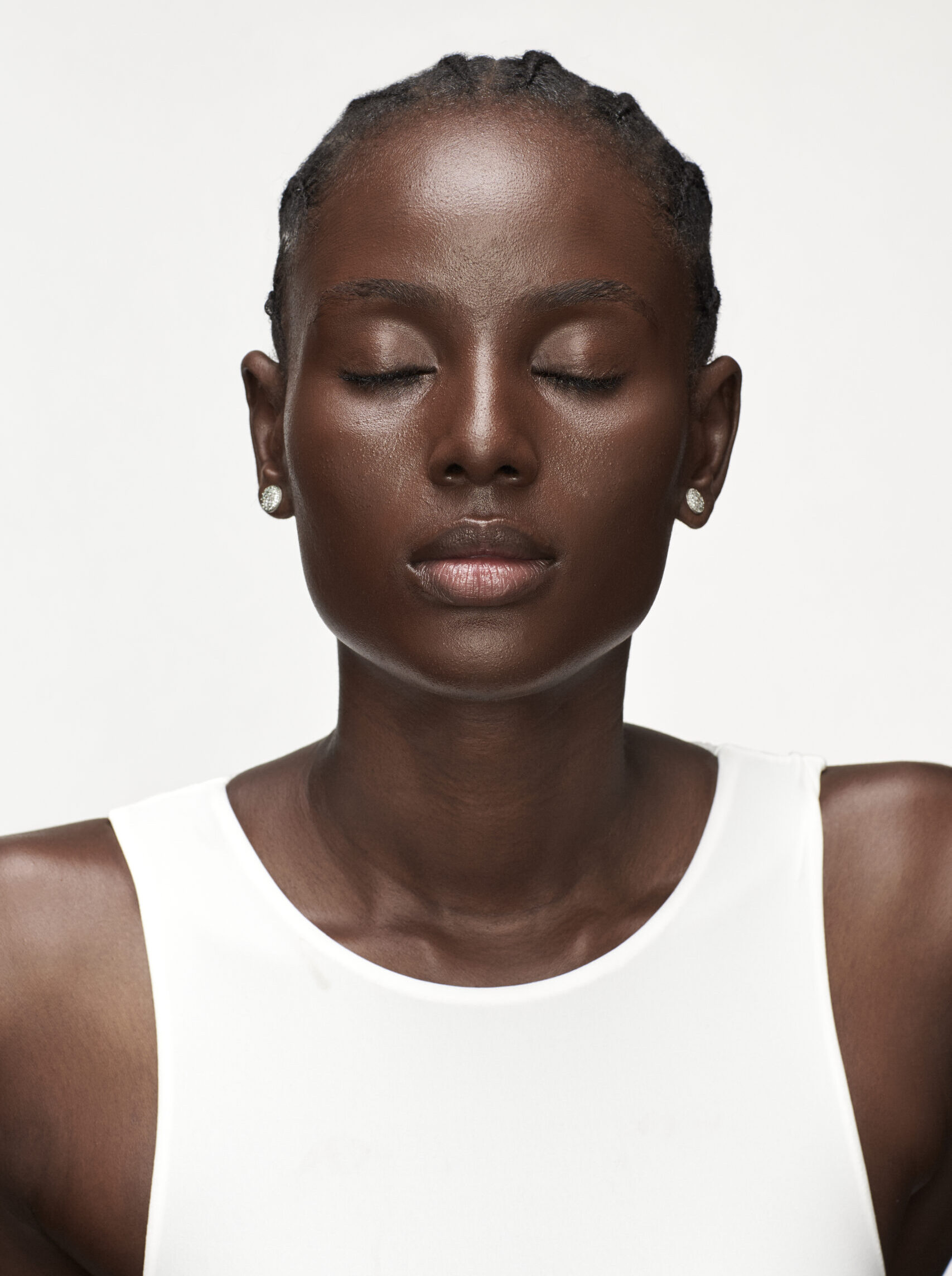
Skincare 101 : The Basics of a Skincare Routine
The primary goal of your skincare routine should be to protect and strengthen your skin barrier, the natural shield of your skin. This barrier plays a crucial role in maintaining the health and appearance of your skin.
It’s recommended to choose products that are non-irritating, especially if you have sensitive skin (e.g., fragrance-free, alcohol-free, and free of essential oils).
Before purchasing products, it’s important to understand your skin type and the issues you want to address.
Regardless of your skin’s specific needs, one universal foundation applies to everyone: cleanse, hydrate, protect. These three steps are essential.
Step 1 : Cleansing
This step is often overlooked, but cleansing your face is fundamental to any skincare routine. You can use the most powerful serums or creams, but without clean skin, you’ll never see optimal results.
- Preserve your skin’s natural balance
A good cleanser helps maintain your skin’s natural balance without drying it out or damaging the barrier. This is key to keeping your skin soft, hydrated, and resilient against external aggressors. - Remove impurities
Throughout the day, your skin accumulates impurities: pollution, dirt, sebum, sweat, and makeup residues. Without proper cleansing, these particles clog pores and can lead to breakouts. - Prepare your skin for treatments
Clean skin absorbs skincare products better. Cleansing prepares your face to receive active ingredients, maximizing their effectiveness.
Tips for optimal cleansing
- Use a gentle cleanser suited to your skin type, preferably without exfoliating agents.
- Wash your face twice a day—morning and evening. However, morning cleansing isn’t mandatory. If you have dry or dehydrated skin, simply rinse with water and move on to the next step.
- Evening cleansing is the most important, as this is when the skin regenerates.
- Double cleansing in the evening
- First cleanse: Use an oil-based cleanser (like an oil or cleansing balm). This removes oil-based impurities (makeup, sunscreen). Apply to dry skin, massage in circular motions for 60 seconds, then rinse.
- Second cleanse: Use a water-based cleanser (foam or gel). This step removes residual impurities and restores hydration. Apply to wet skin and massage for at least 60 seconds.
Step 2: Hydrating / Moisturizing
Your skin acts as a natural barrier against external aggressors. Well-hydrated skin stays supple, avoiding cracks or irritations that could weaken this protection.
- A healthy barrier and glowing complexion
Hydration is essential to maintaining skin health, glow, and its protective function. It also prevents premature aging and is key to achieving that “glowy” look. - Avoid skin issues
Dehydration can cause tightness, redness, or even breakouts. Regular hydration helps regulate sebum production, reducing the risk of blemishes. - For all skin types
- Oily skin still needs hydration to avoid overproducing sebum in response to dehydration.
- Dry skin should opt for richer, more occlusive products (formulas with vegetable oils, butters, esters, etc.).
- For oily skin, lighter textures like gel-creams or fluids are more appropriate, though some occlusives remain essential.
- Skin changes with the seasons (oily skin can become dry and vice versa), and the climate also plays a role in product choice (e.g., winter vs. summer routines).
A well-formulated cream combines humectants (which retain moisture) and occlusives (which lock in hydration).
Using toners, serums, or ampoules is optional—they’re a “nice-to-have,” not a must.
Step 3 : Protecting
Sunscreen is a cornerstone of any skincare routine. Incorporating it daily is essential for healthy, glowing skin. Whether it’s summer or winter, sunscreen remains your best ally against harmful sun damage.
- Prevent premature aging
UV rays accelerate skin aging, causing wrinkles, dark spots, and loss of elasticity. Daily sunscreen use protects against these visible signs of aging. - Protect against skin cancer
Prolonged, unprotected sun exposure significantly increases the risk of developing skin cancer, including melanoma. - Preserve an even complexion
The sun can worsen issues like hyperpigmentation or melasma, leading to uneven skin tone. Sunscreen helps maintain a bright and uniform complexion. - Compatible with other treatments
Some active ingredients in skincare (like acids or vitamin C) make the skin more sensitive to the sun. Sunscreen prevents irritation and enhances their effectiveness.
How to choose the right sunscreen
- SPF: Opt for SPF 30 or higher.
- Broad-spectrum protection: Ensure it protects against both UVA and UVB rays.
- Texture: Choose a texture that suits your skin type (fluid for oily skin, cream for dry skin).
Example of a basic skincare routine
Morning
- Option 1: Rinse your face with water, apply a moisturizer, and follow with sunscreen.
- Option 2: Use a gentle cleanser, then apply moisturizer and sunscreen.
Tip: For oily skin, you can skip the moisturizer step and apply a hydrating sunscreen directly. Evening
- Double cleanse (oil or balm + water-based cleanser), followed by a moisturizer.
Please contact us if you have any questions or need personalized advice. We’d be delighted to support you in your skincare journey!

